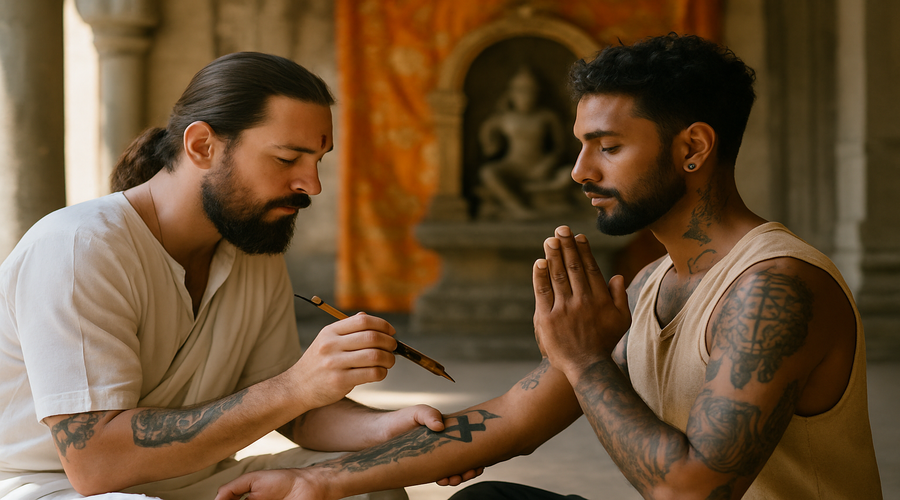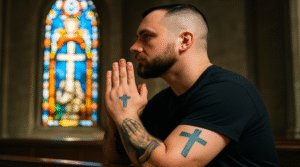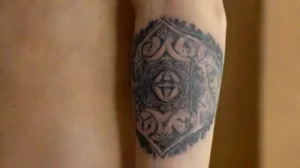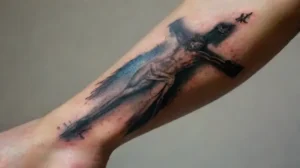Religious ceremonies have been an integral part of human culture for centuries, often involving symbolic practices that convey spiritual meaning. Among these practices, tattoos and piercings have gained recognition as methods of endorsing faith, marking significant milestones, or demonstrating devotion. These body modifications are increasingly viewed not just as personal expressions but also as sacred acts within various religious traditions.
Throughout history, different faiths have incorporated tattoos and piercings into their rituals, each with unique symbols and customs. These practices often serve as rites of passage or signals of belonging to a sacred community. Understanding their significance offers a deeper insight into how religious identity is expressed through the body.
Historical Significance
In ancient times, many cultures used tattoos and piercings in spiritual practices, often to invoke protection or blessings. For example, Polynesian tribes utilized body art during initiation rites to symbolize strength and spiritual connection. These markings were believed to carry divine power, bridging the physical and spiritual worlds.
Similarly, in ancient Egypt, certain piercings marked individuals as devoted followers of deities or as members of sacred orders. These body modifications could also denote social status or spiritual achievement. The historical use of such practices underscores their importance in religious and cultural identity.
Cultural Variations
Different religions and cultures have unique approaches to body modifications during rites. In Hinduism, sacred symbols are sometimes tattooed onto the body to invoke divine favor or as a pledge of faith. These tattoos are often done during specific festivals or ceremonies, symbolizing spiritual dedication.
In Christianity, although less common, some groups incorporate piercings or tattoos as signs of faith or initiation. For example, certain Christian denominations might have tradition-bound practices where body markings symbolize spiritual rebirth or membership in a religious community.
In Indigenous belief systems, tattoos and piercings often serve as identifiers of spiritual journeys or tribal allegiance. The designs may depict sacred stories, deities, or protective symbols, connecting the individual with their ancestors and spiritual guides.
Rituals and Ceremonies

The process of obtaining tattoos or piercings during religious rites is often accompanied by ceremonial rituals. These ceremonies may involve prayers, chants, or offerings to divine entities to bless the body modifications. Participants usually consider these acts as sacred and integral to their spiritual journey.
Preparation for these rites often includes fasting or purification rituals to symbolically cleanse the body and soul. The act of getting tattooed or pierced becomes more than a physical transformation; it signifies a commitment to their faith and spiritual growth.
Furthermore, the community’s participation emphasizes collective support and spiritual connection. Witnessing or partaking in these rites reinforces social bonds and shared religious values, making the practices deeply meaningful and revered.
Symbolism and Designs
The designs used in religious tattoos and piercings are rich with symbolism. Often, these symbols depict deities, sacred animals, or natural elements associated with spiritual beliefs. Each 디자인 aims to embody spiritual qualities such as protection, wisdom, or divine favor.
Colors and motifs are carefully chosen to align with specific theories or doctrinal meanings. For example, a tattoo of a lotus flower may symbolize purity and spiritual awakening in certain traditions. These intricate designs serve as constant reminders of one’s faith and spiritual commitments.
In some cases, body modifications are temporary or reversible, allowing individuals to express evolving beliefs or life stages. The symbolism of tattoos and piercings during rites underscores their lasting importance in personal and communal spiritual identities.
Ethical and Religious Perspectives

While many view tattoos and piercings during rituals as sacred, some religious doctrines discourage bodily modifications altogether. For instance, certain faiths interpret scripture as prohibiting permanent marks or alterations to the body, considering them disrespectful or sacrilegious.
Conversely, other traditions celebrate these practices as divine ordinances, emphasizing their spiritual significance. Religious leaders may endorse specific body modifications as a form of devotion, viewing them as a manifestation of faith in the physical realm.
The debate often hinges on interpretations of religious texts and cultural contexts. Understanding these diverse perspectives helps recognize the complex relationship between body modifications and spiritual practice across religions.
Modern Perspectives
Today, many individuals incorporate tattoos and piercings into their spiritual practices as a form of personal expression. This trend reflects a broader acceptance of body art as part of personal faith journeys or spiritual identities. Wearers often select symbols that hold deep personal meaning or represent their religious beliefs.
Religious communities are increasingly embracing the significance of body modifications in spiritual life. Some congregations or spiritual groups offer blessings or ceremonies for tattoos and piercings, legitimizing these acts within a religious context. This shift highlights how contemporary spirituality often blends tradition with modern expressions.
Despite varying opinions, the core intention behind these practices remains rooted in devotion and spiritual connection. They continue to serve as poignant symbols that reinforce faith, identity, and spiritual resilience across diverse societies.
Tattoos and piercings during religious rites embody a profound intersection between physical expression and spiritual devotion. Throughout history and across cultures, body modifications have served as powerful symbols of faith, initiation, and connection to the divine. These practices underscore the universal human desire to embody spiritual principles through the body.
As societies evolve, so do perceptions of these rituals, blending tradition with contemporary expressions of faith. Whether seen as sacred rites or personal acts of devotion, tattoos and piercings remain meaningful ways to forge and express one’s spiritual identity, solidifying their place in the rich tapestry of religious practice worldwide.







